Over the years, we have managed numerous projects, scaled our own media company to seven-figure annual revenues through SEO, and collaborated extensively with external service providers in the SEO industry. In the process, we discovered many methodological flaws in the approaches of most SEO and content agencies, which we believe will no longer work in an AI-first world driven by Google. Companies need to rethink their strategies and question their current practices.
To address this, we developed our AI-driven SEO framework, which we successfully implemented in our agency and our own projects. In this article, we will explain the common mistakes that most companies make when it comes to SEO and how companies can modernize their approach so SEO remains effective in the age of AI, ultimately driving leads and increasing business for your company.
Part 1: Why old methods are not working anymore
Traffic is a bad metric
Most agencies and companies place too much emphasis on traffic as a key metric in their reporting. In our view, this approach is not particularly wise, especially as Google is directing less traffic to the broader web (good luck with SEO reporting), and traffic alone offers little insight into actual business impact. It’s often argued that SEO articles contribute to brand awareness, but for us, that is not a sufficient reason to justify content production.
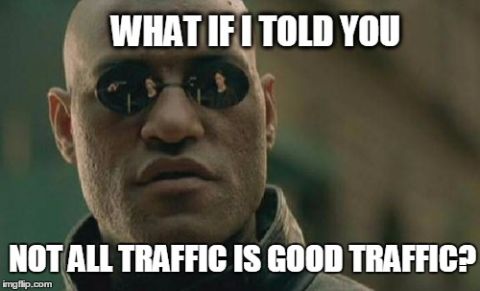
Recently, we’ve observed the first SEO agencies and consultants reporting a steady increase in their clients’ traffic through AI tools like Perplexity or ChatGPT. However, this traffic is frequently compared 1:1 with Google traffic, which is a mistake. Each click-through from an AI tool is far more qualified and of higher quality, as the user typically arrives at the website after an in-depth conversation.
Buying or creating generic content is a terrible idea
The expectations for content are continually rising, particularly in terms of conveying real expertise and experience. Even using generic content generated by tools like ChatGPT won’t give you a competitive edge, as competitors can easily replicate these methods. Additionally, generic content typically fails to convert—Google users don’t want to read basic definition articles from brands.
Battling for Tofu (Top of the funnel) keywords is not a good idea for most companies
When we develop SEO strategies, we’re very selective about the keywords we target. Unfortunately, we still see companies focusing too much on big, high-volume keywords. They often lack the authority to rank for these, and it requires significant time and resources to compete.
When building a strategy, we organize by subject area, prioritizing the areas that generate the most revenue. We focus first on keywords that are closer to conversion within the selected topic area. SEO should begin in the middle of the customer journey and work toward the bottom of the funnel (BoFu). Our approach starts with BoFu keywords and gradually expands up to the middle of the funnel.
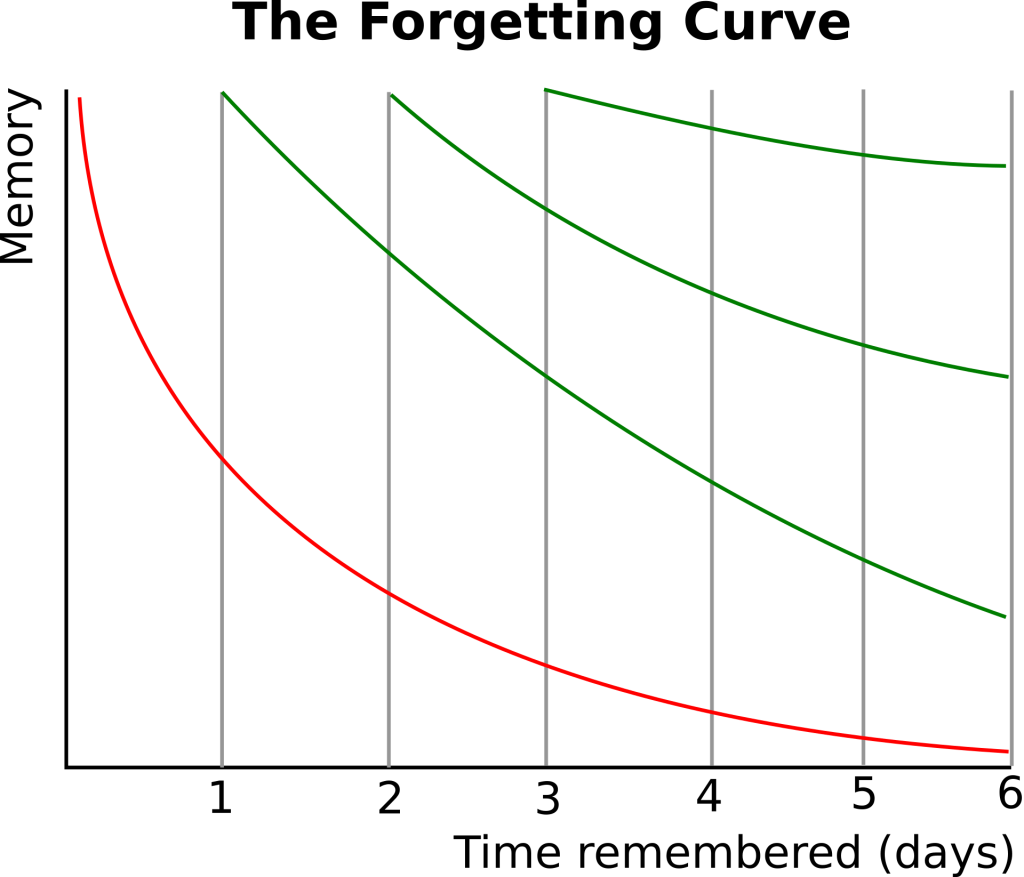
Organic Search is a saturated market
Let’s be honest: organic search on Google, especially in English-speaking markets, is incredibly competitive. Too many companies buy into the idea that “SEO is free traffic” and attempt to claim a piece of the pie without a proper strategy.
There are companies with entire content and PR departments dedicated to SEO, and they’ve been building their presence for years. Why would a website with a minimal budget expect to surpass these established players?
From our point of view, it therefore makes sense to carefully weigh up the investment in SEO.
Companies are wasting budgets on initiatives that don’t move the needle.
Implementing SEO in established companies with multiple departments is not easy. This can quickly become expensive if the wrong adjustments are made—something many people tend to forget. What are these issues? Often, it’s the outcomes of SEO audits that consume the budget without significantly moving the needle.
Most companies are often in a sort of maintenance mode. They focus on improving their website and working through backlogs rather than producing new content and executing revenue-generating activities.
AI overviews are the new baseline for quality.
In recent years, the SEO strategy of many agencies and companies has been to copy high-ranking websites (the skyscraper method) and slightly modify the content. This has resulted in a generic mix of content ranking for many keywords. If Google gradually starts answering these questions itself with generic AI, there will be little incentive for users to click on website results.
Up to 75% of traffic-generating keywords are unknown.
If you look at the data in Google Search Console, you’ll notice a discrepancy between total clicks and the listed keywords—sometimes up to 75%. What does this mean for SEO? There’s a black box, particularly when it comes to long-tail keywords.

Part 2: What Companies Need to Understand
Before introducing our framework for modern SEO, we need to examine the rapidly evolving search landscape. Several major trends are fundamentally reshaping how search works and how businesses should approach their SEO strategies:
The Rise of Zero-Click Searches
Recent data shows that approximately 60% of all Google search queries now result in no clicks on any results. While these numbers might initially seem alarming, a deeper analysis reveals a more nuanced picture. Many zero-click searches occur because users find their answers directly in the Search Engine Results Page (SERP). This efficiency, while beneficial for users, presents new challenges for businesses seeking traffic.
The proliferation of featured snippets and knowledge panels has fundamentally changed how information is consumed on Google. These elements provide instant answers to users’ questions without requiring them to click through to any website. Similarly, local searches frequently end without clicks as users gather business information directly from Google Maps. The rise of voice search has further contributed to this trend, as voice queries typically result in single, spoken responses rather than traditional website visits.
The AI Revolution in Search
Decentralization of Search
The search landscape is experiencing a fundamental transformation driven by artificial intelligence advancements. Large Language Models (LLMs) are democratizing search capabilities, making sophisticated search functionality accessible to a broader range of applications and platforms. This democratization has begun to challenge traditional search engine monopolies, leading to the emergence of vertical-specific search experiences tailored to particular industries or use cases.
Google’s long-held advantage in information aggregation is steadily diminishing as LLMs demonstrate the ability to effectively answer 90-95% of common search queries. The search ecosystem is evolving from a centralized model dominated by a few major platforms to a distributed network of multiple access points. However, the long tail of search—consisting of highly specific or specialized queries—may remain valuable for businesses targeting niche markets or specific expertise areas.
The Evolution of Purchase Decision-Making
Modern purchase decisions, particularly in B2B contexts, have evolved into increasingly complex processes. Today’s buying journey looks markedly different from traditional models, with several key changes in how decisions are made and information is gathered.
Changed Research Patterns
Contemporary buyers conduct extensive self-directed research before making any contact with potential vendors or suppliers. This research phase typically involves multiple stakeholders, each bringing their own perspectives and requirements to the decision-making process. Information is gathered from a diverse array of sources and platforms, making it crucial for businesses to maintain a strong presence across multiple channels. In this environment, trust and authority signals have become more important than ever, as buyers seek to validate their choices through various forms of social proof and expert endorsement.
Today’s buyers expect sophisticated content that matches their level of expertise and addresses their specific needs. The decision-making process involves multiple touchpoints across various channels, requiring businesses to maintain consistent messaging and value propositions throughout their communications. Content must be strategically created to serve different stages of the buying journey, from initial awareness through to final purchase decisions. Technical buyers, in particular, expect deep, expert-level information that demonstrates a thorough understanding of their challenges and requirements.
Part 3: Our Framework
1. Intent-Driven Keyword Strategy
We prioritize search terms that indicate high buying intent and align with our clients’ business goals, rather than focusing solely on high-volume keywords. We focus primarily on bottom-of-the-funnel (BoFu) and middle-of-the-funnel (MoFu) content, typically avoiding top-of-the-funnel (ToFu) content to conserve budget and maximize impact.
Likewise, we analyze the customer journey and work closely with our clients to identify key touchpoints. We then map these touchpoints to high-impact keywords, ensuring our content strategy aligns perfectly with the user’s path to conversion.
However, keyword research is not just the practical part, we also analyze the market very closely together with our clients. We look at what competitors there are, what strategies they are using and gather as much information as possible about the target group.
This is the only paradigm which makes sense in a world of LLMs and AI, because chat interface can easily answer the bulk of informational searches. However when it comes to commercial keywords and buying intent, users demand something more than a wall of text. Accordingly they are clicking through to websites until they find a satisfying offer. Hence it makes sense to let LLMs like Perplexity win the informational and assistance searches and focus more on commercial and navigational intent keywords.
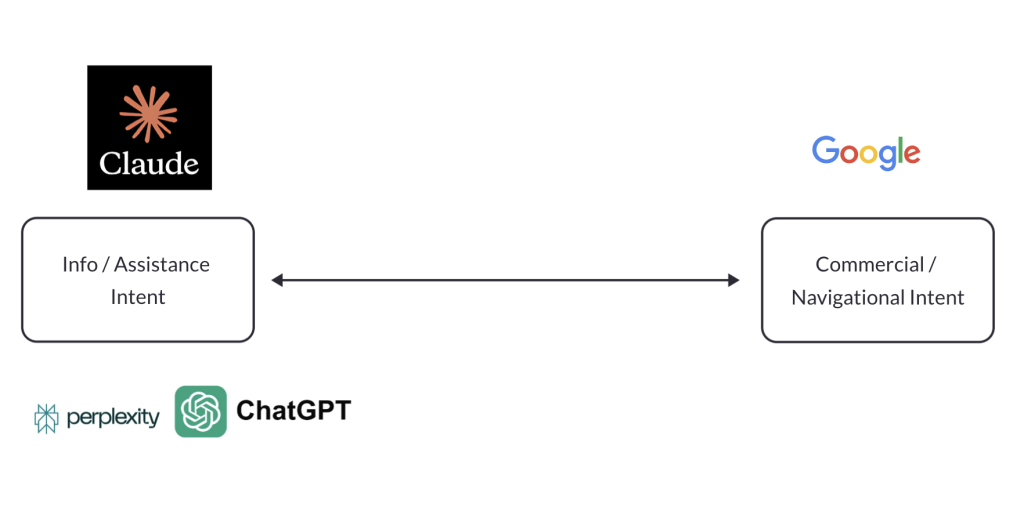
Our Three Tiers of High-Impact Keywords:
- Solution-Specific Keywords: We target terms that directly relate to our client’s product or service category. For example, “best CRM software” or “e-commerce platform”.
- Comparative Keywords: We focus on terms that indicate users are evaluating options, such as “Product A vs Product B” or “alternatives to Product X”.
- Problem-Solving Keywords: We address specific issues that our client’s product or service solves. For instance, “how to increase sales leads” or “improve customer retention”.
Depending on the company, we focus primarily on a longtail topic strategy (Note that we deliberately use the term topic strategy instead of a longtail only strategy.)
Explained: We focus on exciting sub-topics, as we cannot track a lot of data in the long-tail on keyword level. Therefore we need to identify topics that are exciting for the target group but do not appear in the keyword tools. This gives us a competitive advantage over your competitors. We call this ‘anticipated traffic’
2. Content Creation Strategy
Before creating any content we map out our client’s website and uncover untapped opportunities which we can cover. We developed a specific site structure blueprint for any business model, be it SaaS, E-Commerce, Marketplace or Service based agencies. Accordingly to the respective blueprint we can exactly tell you where it makes sense to invest and where it does not.
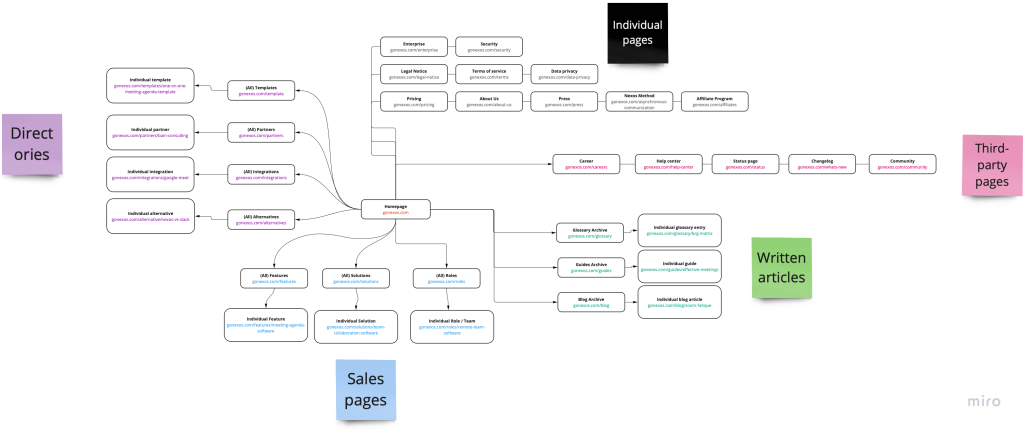
When it comes to creating content itself, we produce content that directly addresses user intent and showcases our client’s solution value. Our approach includes:
- Focusing on solving specific problems identified in our keyword research
- Providing in-depth, actionable information that positions our client as an authority
- Incorporating our client’s product or service as a solution, not just a mention
For certain keyword types, we implement Programmatic SEO. This allows us to efficiently create large volumes of targeted, localized, or product-specific content that caters to long-tail keywords and specific user intents.
A great example for such a strategy would be “alternative pages”. These pages present your solution or product as an alternative to your competitor. When your target audience is shopping around they will naturally stumble upon your alternative pages on which you clearly outline how your product is different and why they choose you. Now image you can create such a page for every competitor you have!
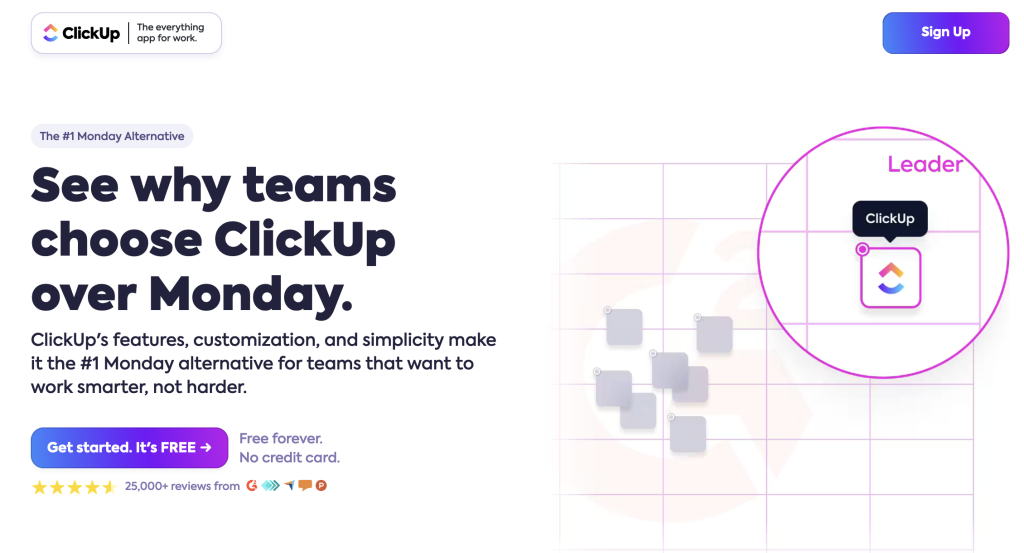
Example of an alternative page where ClickUp explains to potential buyers how they are different from Monday.com
3. Testing Phase
Before scaling our content production, we implement a testing phase. During this period, we experiment with different content types and strategies to gauge how well the domain responds to new content. This approach allows us to:
- Identify which content formats perform best for the specific domain
- Understand how quickly the domain can rank for new content
- Determine the most effective content distribution strategies
Only after we’ve gathered sufficient data from this testing phase do we move into full-scale content production.
This approach is necessary because Google moved away from the “one size fits all” paradigm when it comes to search. Everybody’s Google experience is unique and personalized. As such it becomes harder and harder to find a silver bullet or in other words content which caters to a broad audience.
However, this is a good thing, as lazy efforts from competitors gets crushed.
4. AI-Enhanced Content Optimization
We leverage AI tools to enhance our content creation process while maintaining a crucial human touch:
- We use AI for initial research and outline creation, ensuring we cover all relevant aspects of a topic
- Our team employs AI writing assistants for first drafts, increasing efficiency
- Our experienced human editors then refine these drafts, adding unique insights, brand voice, and ensuring the content meets our high-quality standards
With this process we scale high-quality content at reasonable prices, so even companies with a smaller budget stand a chance against bigger competitors.
5. Conversion-Focused Page Design
We optimize our content pages for conversions, not just traffic. This includes:
- Incorporating contextual, problem-specific CTAs that align with the user’s intent.
- Implementing clear user flows to our client’s product or service pages.
- Using social proof to increase trust like customer stories, trust badges, media badges and case studies to build credibility and encourage action.
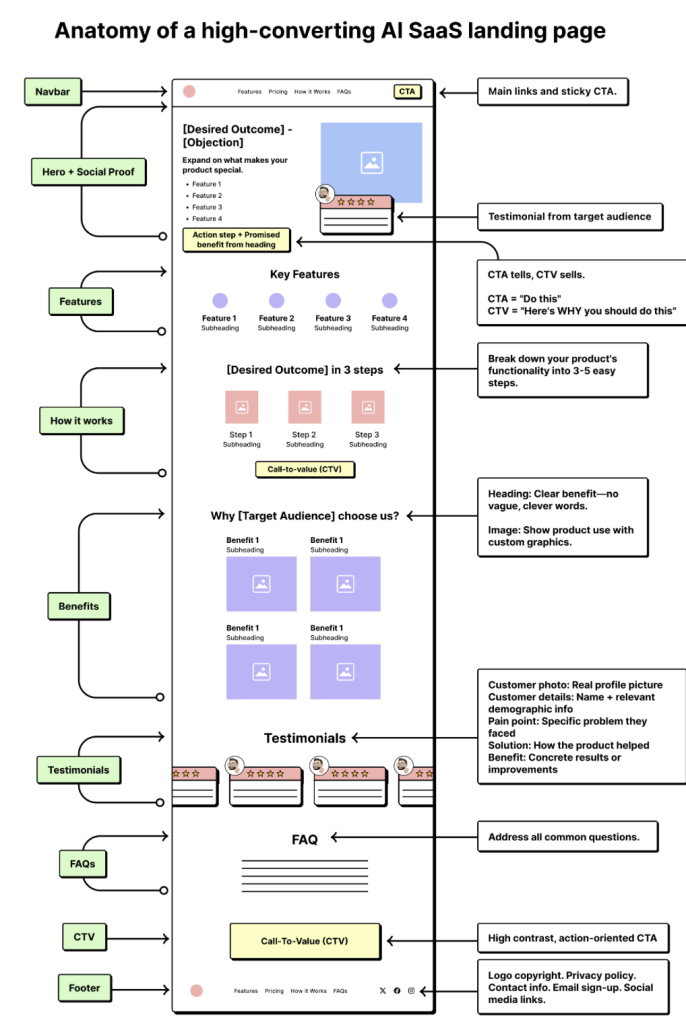
6. Measurement Beyond Traffic
We implement analytics that focus on business impact rather than just traffic numbers:
- Tracking conversions (sign-ups, leads, sales) from organic search to demonstrate ROI
- Measuring engagement metrics like time on page and scroll depth to gauge content quality
- Analyzing the customer journey from initial content interaction to final conversion
7. Continuous Refinement
We regularly review and update our strategy based on performance data:
- Identifying top-converting content and replicating its success across other topics
- Improving or removing underperforming content to maintain a high-quality content portfolio
- Staying updated on AI and search engine algorithm changes to ensure our strategies remain effective
8. Holistic SEO Approach
We integrate our SEO efforts with other marketing channels for a comprehensive strategy:
- Using insights from PPC campaigns to inform our organic strategy
- Aligning content topics with overall marketing campaigns for consistent messaging
- Leveraging email marketing and social media to promote and distribute SEO content, creating a multichannel approach
By following this framework, we create an SEO strategy that goes beyond traditional traffic metrics to drive real business results in the AI era, always adapting and refining our approach based on data and emerging trends.